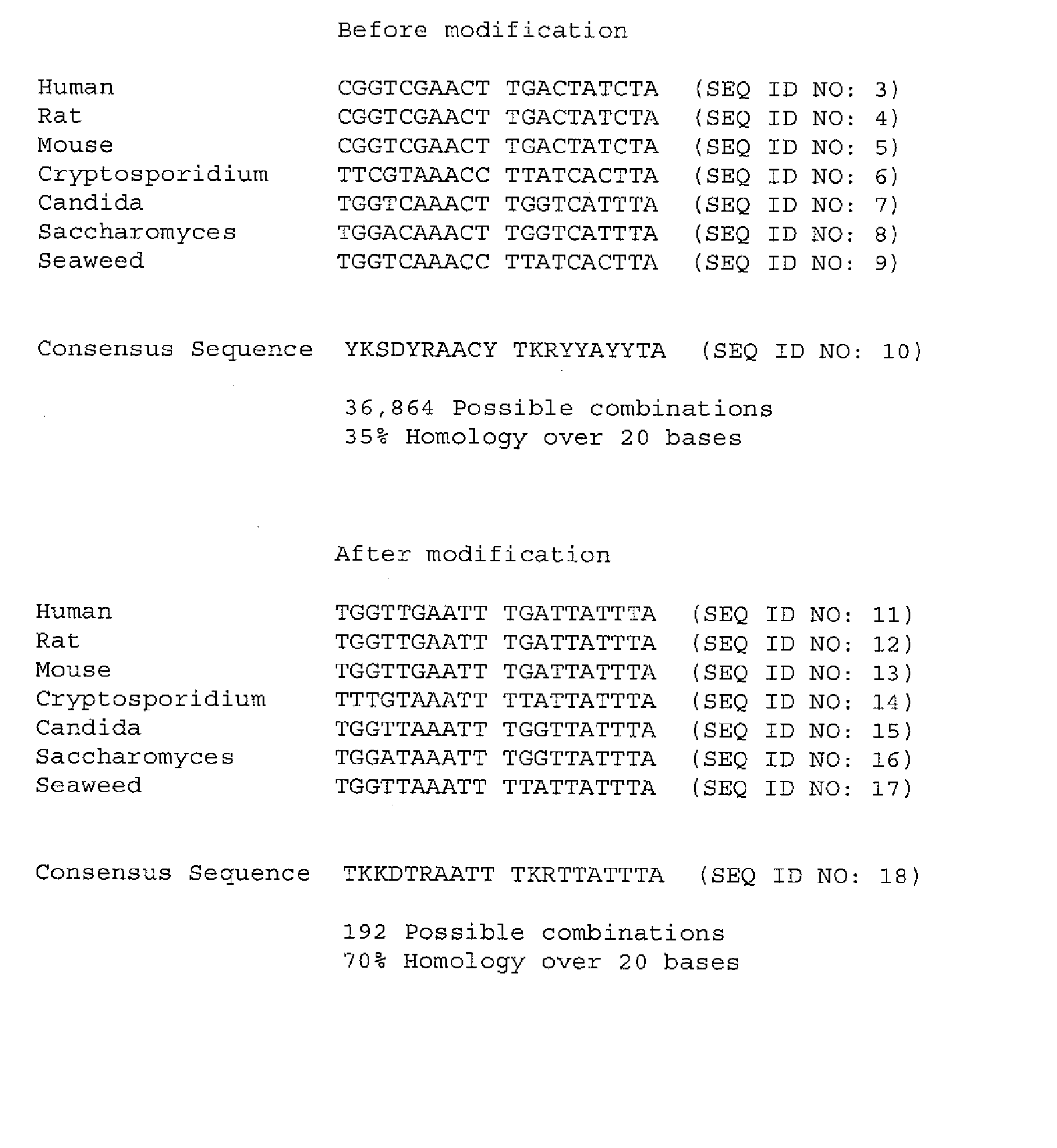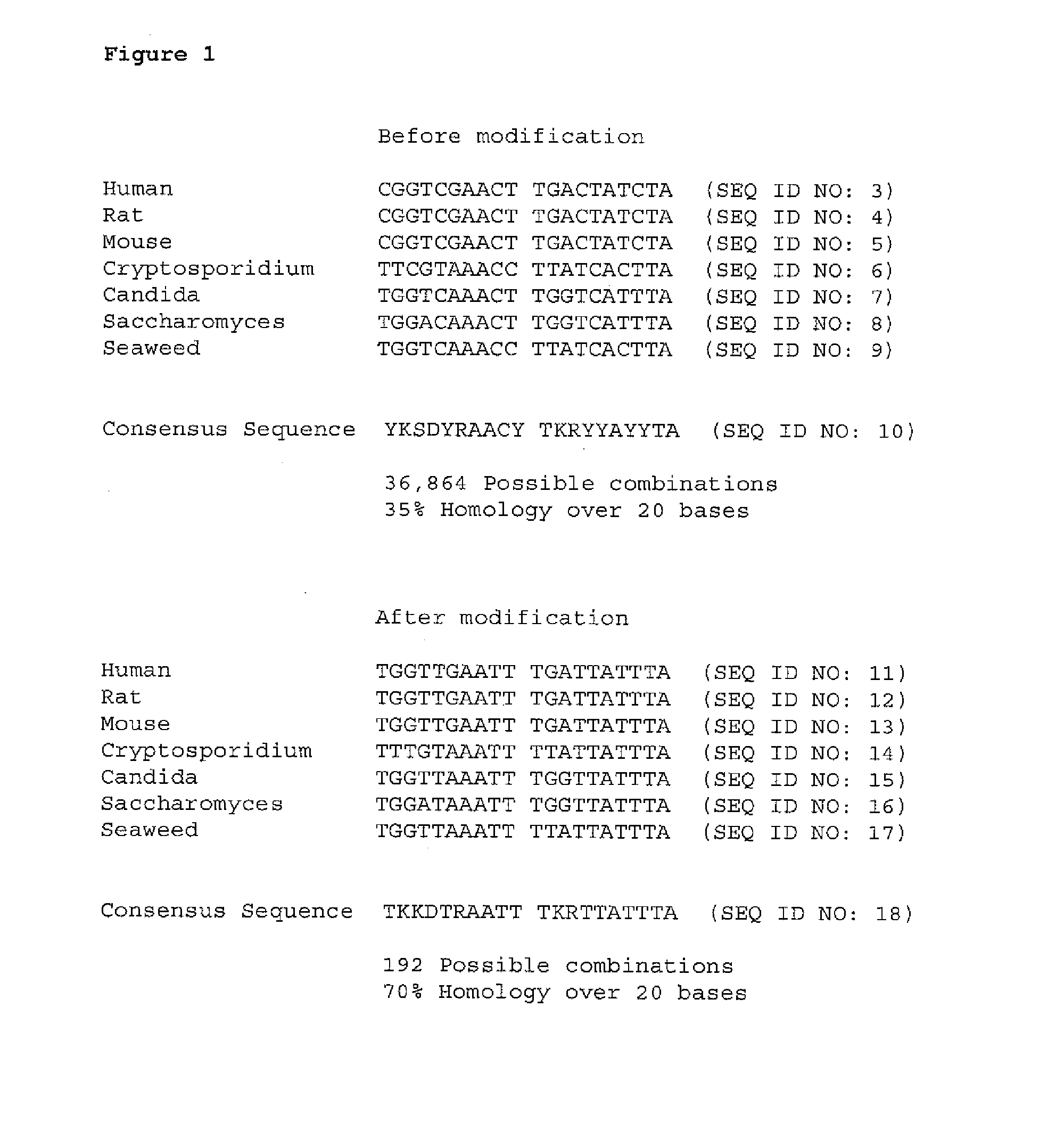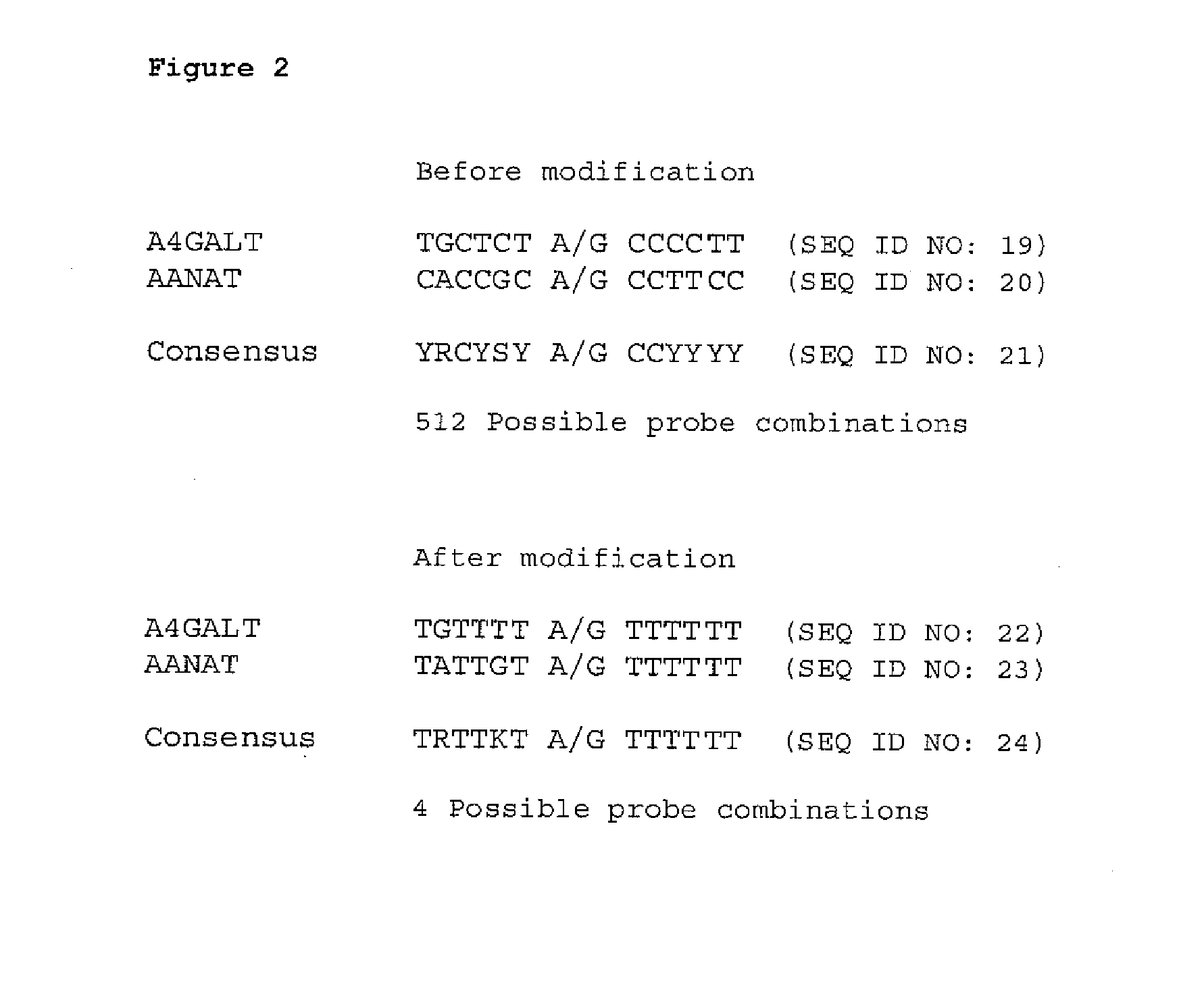Detection of target nucleic acid
a nucleic acid and target technology, applied in the field of target nucleic acids detection, can solve the problems of loss of amplification signals, further damage to dna, difficulty or time-consuming preparation of appropriate number of probes or primers, etc., and achieve the effect of reducing the total number of cytosines
- Summary
- Abstract
- Description
- Claims
- Application Information
AI Technical Summary
Benefits of technology
Problems solved by technology
Method used
Image
Examples
Embodiment Construction
[0027] The present invention allows a whole new approach to detect DNA that does not require directly targeting the DNA of interest that is present in a sample or occurs naturally in higher organisms. The invention relies on modification of native DNA to form a derivative or modified nucleic acid that does not occur in nature and then detecting the presence of one or more targets, regions or areas of interest in this derivative or modified nucleic acid. As the derivative or modified nucleic acid is formed chemically from the original DNA, information can be obtained indirectly on the naturally occurring DNA without having to probe, bind or directly amplify the native DNA. Additionally, the modification process allows for new nucleic acid sequences, not previously present in nature, to be generated that can be used as targets, probes, etc.
[0028] In a general aspect, the present invention relates to modifying nucleotide composition of DNA from higher organisms by treating DNA with an...
PUM
| Property | Measurement | Unit |
|---|---|---|
| volume | aaaaa | aaaaa |
| volume | aaaaa | aaaaa |
| volume | aaaaa | aaaaa |
Abstract
Description
Claims
Application Information
 Login to View More
Login to View More - R&D
- Intellectual Property
- Life Sciences
- Materials
- Tech Scout
- Unparalleled Data Quality
- Higher Quality Content
- 60% Fewer Hallucinations
Browse by: Latest US Patents, China's latest patents, Technical Efficacy Thesaurus, Application Domain, Technology Topic, Popular Technical Reports.
© 2025 PatSnap. All rights reserved.Legal|Privacy policy|Modern Slavery Act Transparency Statement|Sitemap|About US| Contact US: help@patsnap.com



